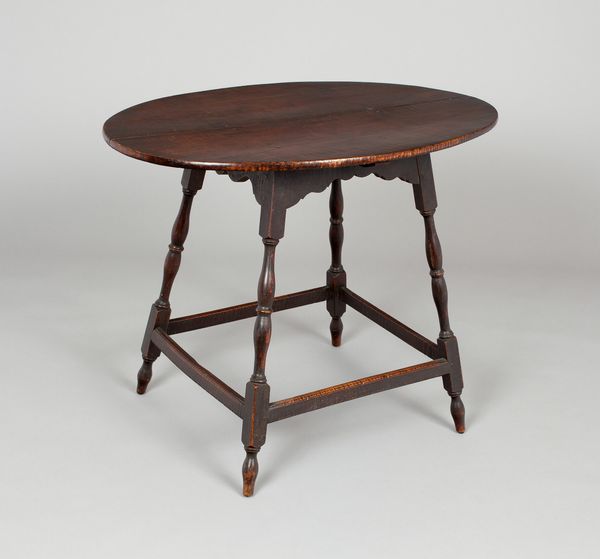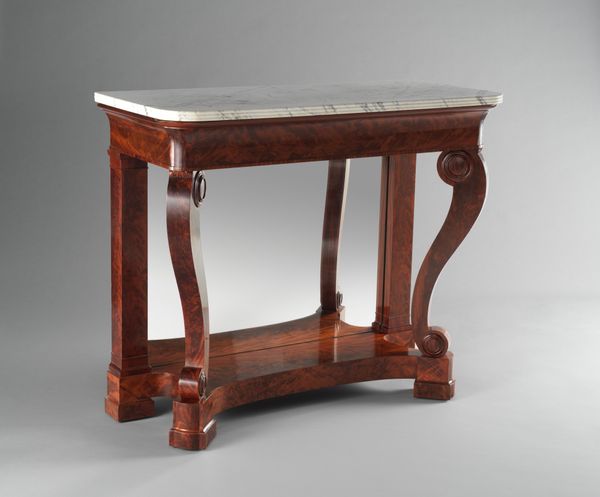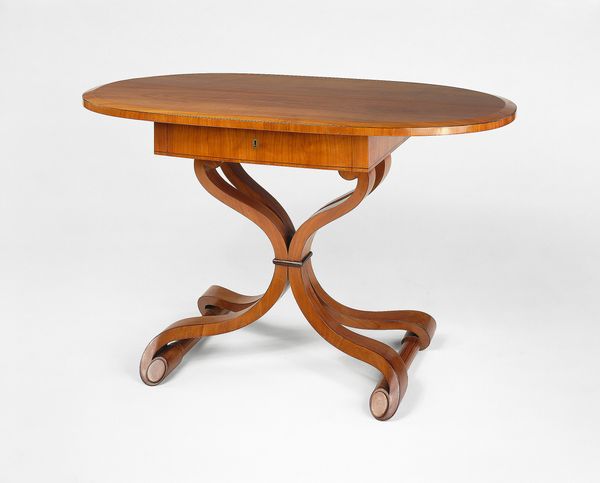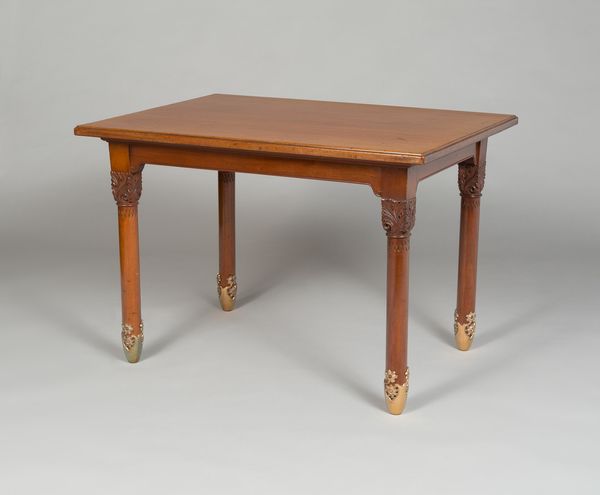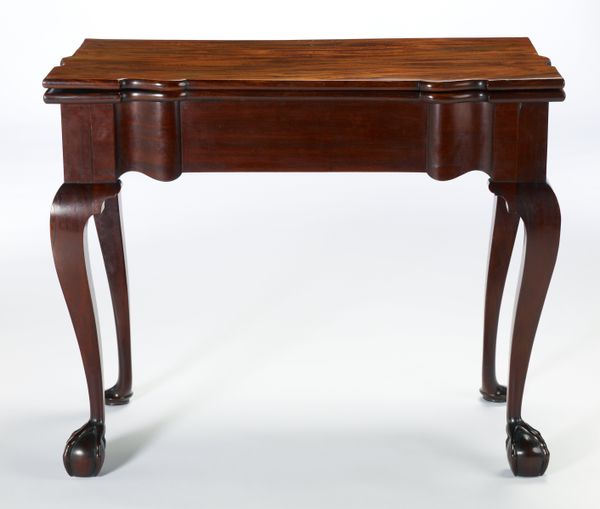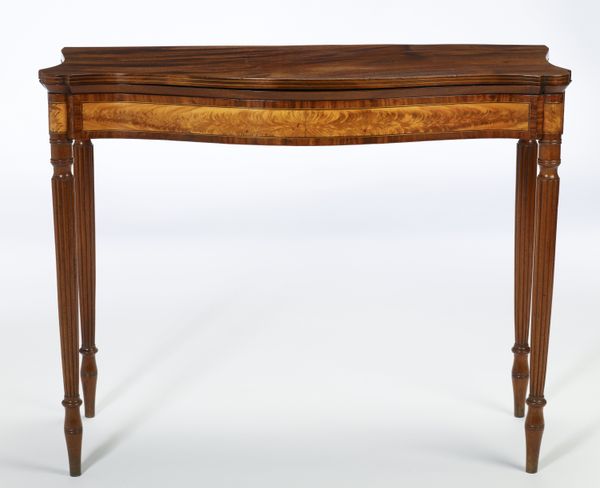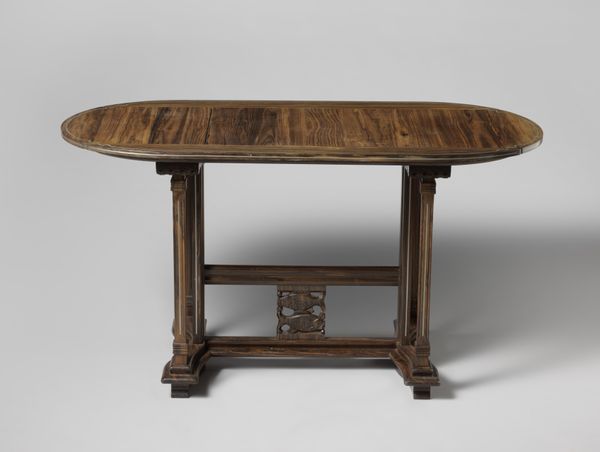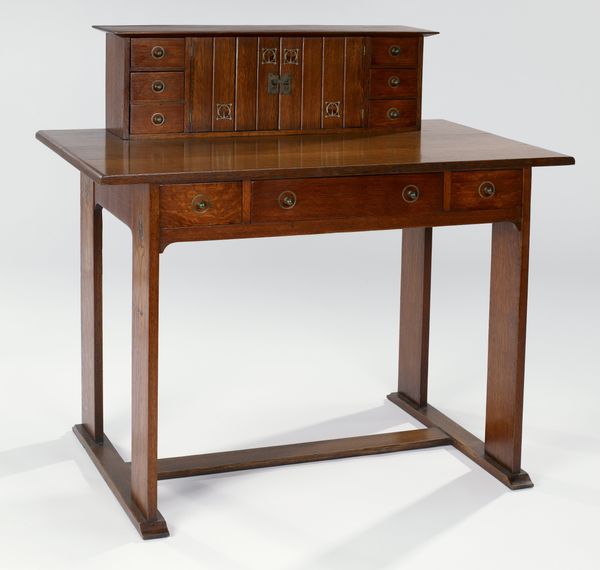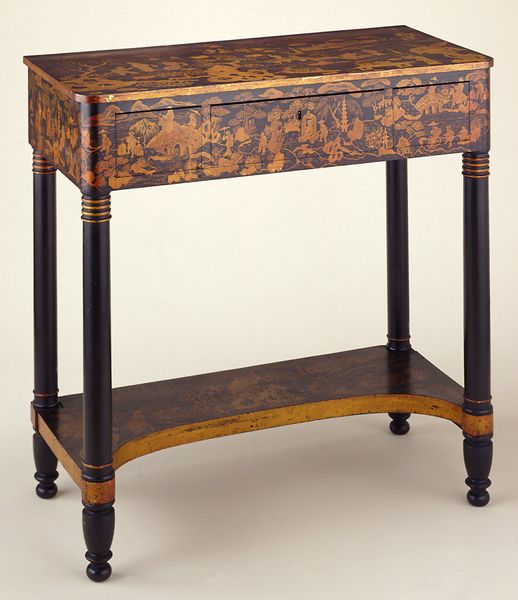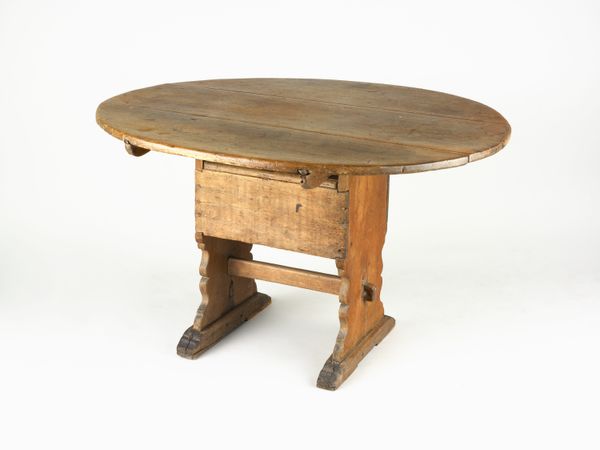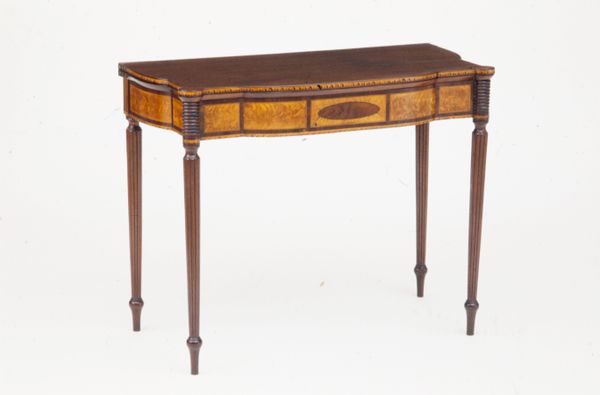
carving, wood
#
table
#
carving
#
arts-&-crafts-movement
#
furniture
#
england
#
wood
#
decorative-art
Dimensions: 74.9 × 83.8 × 50.8 cm (29 1/2 × 33 × 20 in.)
Copyright: Public Domain
Curator: The ‘Side Table’ by Arthur Heygate Mackmurdo, created around 1890, now resides here at the Art Institute of Chicago. Notice the intricate carving that adorns nearly every surface. Editor: My first impression is that this is a darker take on furniture, with these organic, stylized plant forms bringing a moody, perhaps even slightly somber, tone. The carving certainly catches the eye. Curator: Indeed. Mackmurdo was a key figure in the Arts and Crafts movement in England. This piece exemplifies the movement's emphasis on handcrafted production. We see wood, meticulously carved, elevating a utilitarian object into something distinctly artful. One can imagine the artisan painstakingly working each detail. Editor: The stylized foliate patterns are so characteristic of this period. They aren't direct representations of nature but instead seem charged with an emotional current. Look at the way the leaves curl and twist, it reminds me of a symbolic dance. They almost suggest the Pre-Raphaelite obsession with symbolism, especially pertaining to growth and decay. Curator: Exactly. It demonstrates the inherent social critique through its return to traditional skills—laborious handwork meant to stand in stark contrast to the mass-produced, often shoddy goods churned out by industrial factories. Consider the socio-economic implications: Who was it made for and who could afford this handcrafted item in contrast to the poorer classes? Editor: And further, consider what this style communicated to its users and observers. Furniture like this signified an immersion into aesthetic thought that almost suggested a removal from, or criticism of, society itself, and a devotion to spiritual significance. In a time of intense shifts towards manufacturing, I wonder what kind of nostalgia this promoted? Curator: It speaks to a desire to reclaim both the value of labor and to reimagine our relationships with material objects and social relationships within making something, an alternative to alienating factory jobs. Editor: Examining the "Side Table", beyond its beauty, allows a richer insight into social consciousness from an earlier period. Its stylized symbolism resonates with deep sentiments about art and craft and how they can symbolize broader worldviews. Curator: Agreed, understanding the processes embedded into each leaf of carving opens further questions about how craft became a conscious expression against production methods, an idea that we can perhaps trace into our present-day issues of labour, commodification, and production.
Comments
No comments
Be the first to comment and join the conversation on the ultimate creative platform.

